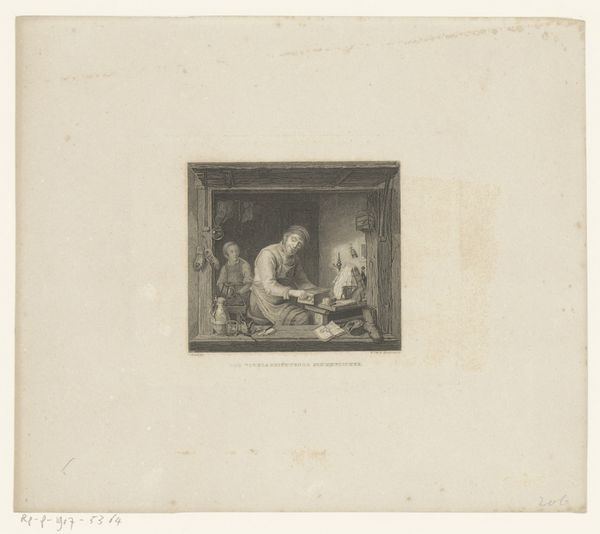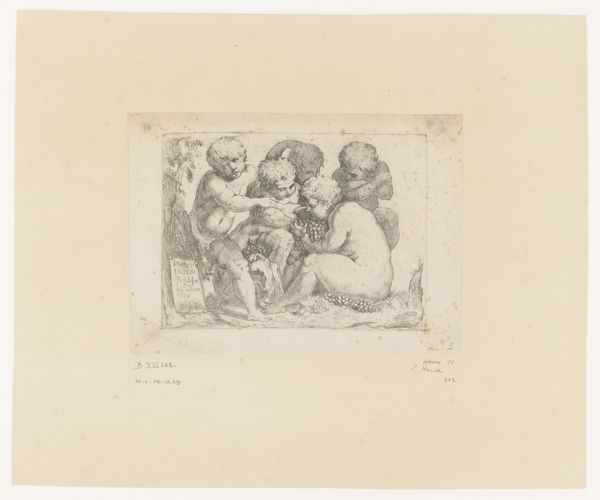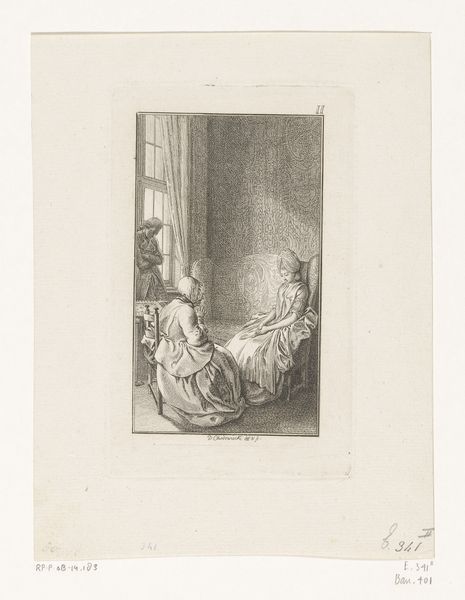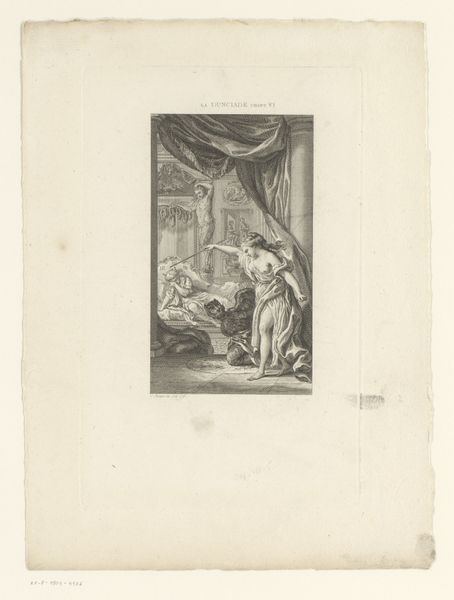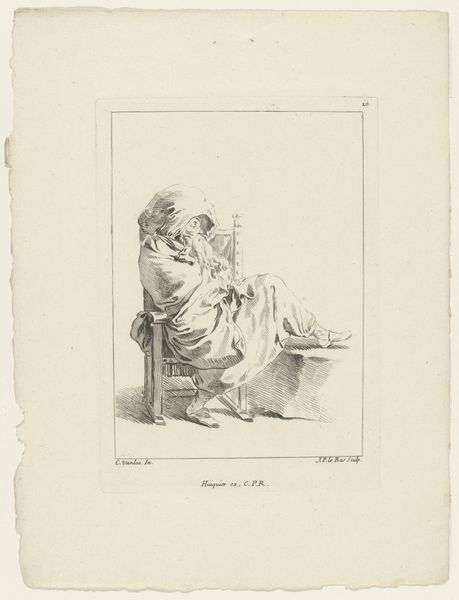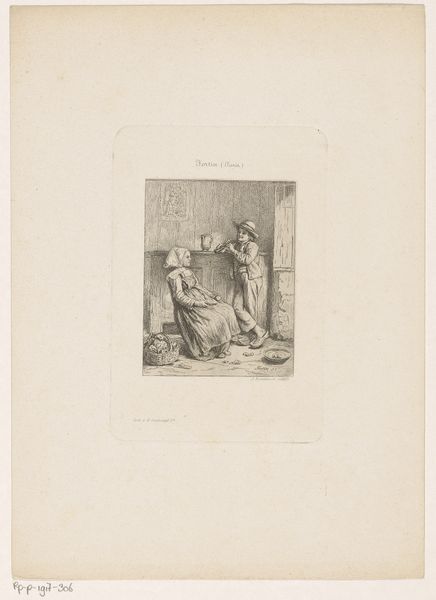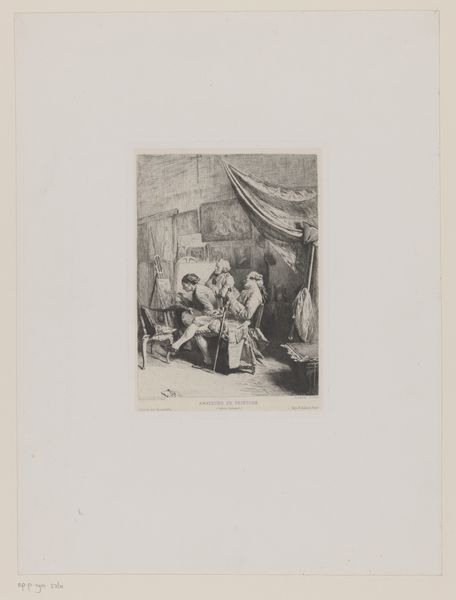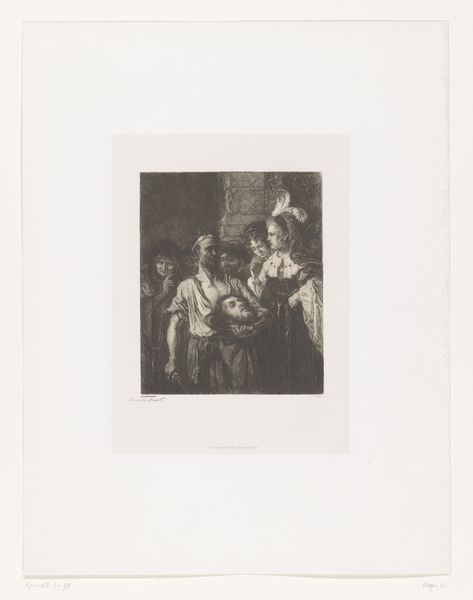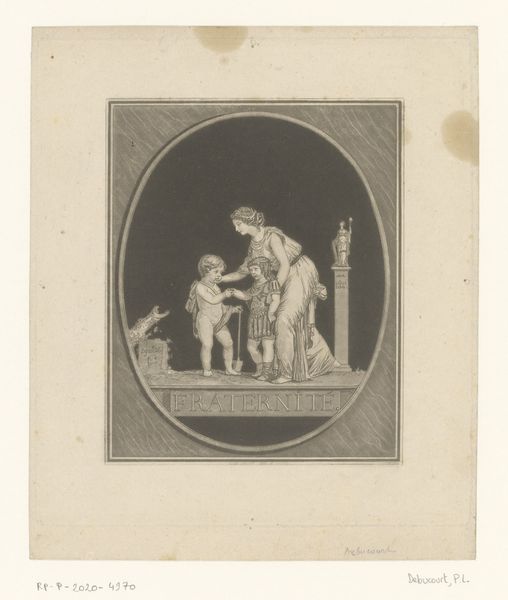
drawing, print, engraving
#
drawing
#
neoclacissism
#
allegory
# print
#
pencil drawing
#
history-painting
#
engraving
Dimensions: height 131 mm, width 204 mm
Copyright: Rijks Museum: Open Domain
Editor: So, here we have "Minerva as Patron of Science and Art," a drawing and engraving from around the late 18th to early 19th century by A. Bleuze. It looks very formal and…staged. What strikes you about its composition? Curator: Formally, observe the clear lines and balanced arrangement of elements. The figure of Minerva dominates, creating a strong vertical axis. Note the artist's deliberate placement of objects: the bust, the globe, and the figures around her, creating a layered sense of space within this composition. Editor: Yes, I can see that now. Everything seems carefully arranged. Can you say more about this layering? Curator: Note the artist uses shading and varying line weights to create a subtle recession into depth. For example, the rendering of the drapery around Minerva's form and the cherubs differs in intricacy and tone, giving volume. Editor: And the textures appear precise. What’s the effect of all of that exactitude? Curator: Such technical precision supports a clear and legible image. Consider the artist’s goal: how lines can lead our gaze and delineate objects in space. Notice, as well, how the crisp lines around the figure enhance the artwork's overall visual impact. Editor: Now that you mention it, it almost feels…calculated. Like it wants to communicate something very specific. Curator: Precisely. Perhaps Bleuze is creating a statement about the artist’s vision to provide intellectual guidance. Or what would you say about that idea? Editor: This exploration reminds me that technique really dictates meaning in this piece. Thanks for walking me through this; it helps reveal the construction and complexity in ways I hadn’t previously recognized! Curator: My pleasure. Close visual analysis can open up many levels of appreciation.
Comments
No comments
Be the first to comment and join the conversation on the ultimate creative platform.

